A CALENDAR OF
JAPANESE FESTIVALS AND EVENTS
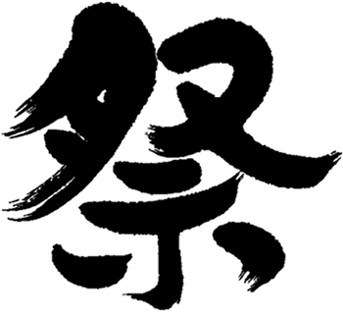
|
JANUARY 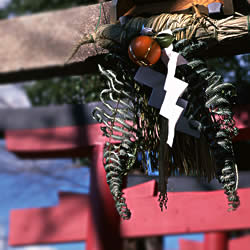 |
||||||||||||||||
DATE | FESTIVALS & EVENTS |
DISTRICT & NEARBY ACCOMMODATION |
||||||||||||||
|
1 |
Gannjitsu New Year's Day People celebrate New Year's Day in a solemn but joyous mood. Entrances of houses are decorated with a pair of small pine trees and bamboo stems, and rice cakes decorated with fern leaves and an orange are placed in the alcove. People drink Sake called Toso and eat Zoni soup. Also people pay the first visit to a shrine or temple to pray for good fortune during the coming 12 months. They also pay visits to friends and relatives to exchange greetings. |
Natonal Holiday |
||||||||||||||
| 1 |
Geta matsuri Young men thrust bamboo poles into a large white wheel called Awa and parade it aloft. The wheel is 2m. in diameter and is made of from the branches of the Gumi (oleaster)tree. |
Yashiro-jinja Shrine Toba-shi, Mie |
||||||||||||||
| 1 |
Horan enya Harbor Festival Fishermen pray to the god of the sea for a good catch of fish and good harvest as they row around the fishing harbor. The name of the festival, "Horan enya" comes from the shouting voice of fishermen when they row their boats. |
Bungotakada-shi Oita |
||||||||||||||
| 2-6 |
Amamehagi Demons Festival Amamehagi =Namahage(men representing gods in the guise of demons) visit houses in the costume of straw raincoat to warn the children against laziness and bad behavior. |
Monzen-machi Ishikawa |
||||||||||||||
| 3 |
Tamaseseri Ball Catching Festival Two groups of half-naked young men scramble for a wooden ball thrown by a Shinto priest. The winning team offers the ball to the god of the shrine and is believed to be assured of happiness during the year. |
Hakozaki Shrine Fukuoka |
||||||||||||||
| 6-7 |
Shorinzan Daruma Ichi (Shorinzan) Daruma Doll Fair Daruma fairs are popular especially in the Kanto district at New Year. Many open-air stalls selling Daruma (equivalent of Dharma, the Indian Buddhist saint)dolls are set up around shrine or temple compounds. It attracts many people,especially merchants, seeking good and strong luck of the year. They hope for their success in business as Daruma doll(round doll without arms and legs) always comes upright every time after it tumbles. People usually paint one of the doll's eyes when they make a wish and paint the other after the wish comes true |
Takasaki-shi Gunma |
||||||||||||||
| 7 |
Usokae matsuri Bullfinch Exchage Festival Participants exchange old bullfinch-shaped amulets for new ones. Bullfinches, which are called "Uso" in Japanese are regarded as a symbol of good-luck. People try to pick "good luck" bullfinches made of gilt wood from the many plain ones as they are passed from hand to hand in the dim light of a small bonfire. |
Dazaifu Shrine Dazaifu, Fukuoka |
||||||||||||||
| 7 |
Yanaizu Hadaka matsuri (Yanaizu) Naked Festival Half-naked(wearing only loincloths) young men gather at the temple in the middle of the and struggle to clamber up a thick rope suspended from the ceiling of the temple building. The first to the top will have the best in the coming year. |
Yanaizu-machi Fukushima |
||||||||||||||
| 7 |
Tamataregu Oniyo (Tamataregu) Fire Festival This is a festival designed to drive away bad luck and make the new year a happy one. Huge torches called Taimatsu are set alight and held aloft. |
Tamataregu Shrine Daizenji-cho Fukuoka |
||||||||||||||
|
9-11 |
Toka Ebisu 10th Day Festival of Ebisu Ebisu is one of the seven gods of good luck. People,especially merchants go to the Ebisu shrine to take home bamboo branches hung with paper replicas of coins or other valuable objects as good-luck charm. |
Imamiya Ebisu-jinja Osaka-shi Osaka |
||||||||||||||
|
The second Mon. |
Seijin no Hi Coming-of-Age Day People welcome the young men and women who have reached the age of 20 as new members of society. Their families and friends encourage them to become aware of their responsibility as adults and to live an independent life from this day on, as they are invested with all the right of citizenship. |
National Holiday |
||||||||||||||
|
14-15 |
Niino no Yukimatsuri ( Niino) Snow Festival This festival is famous for its traditional performances. Many ceremonies such as Dengaku(old type of Noh)or Saiho(purifying rice seeds)are held all night through.Villagers believe snow will bring about a bumper crop for the coming year. |
Izu Shrine Anan- machi Kanagawa |
||||||||||||||
|
15 |
Wakasusa yama Yama Yaki (Wakakusayama) Turf Burning Participants costumed as warrior monks burn the turf on the hillside at Wakakusayama at twilight. This event originated in a boundary dispute between two famous temples. And now it helps to get rid of harmful insects. |
Wakakusayama Hill Nara-shi Nara |
||||||||||||||
| 20 |
Motsuji Madarajin sai (Motsuji Temple)Festival for Madarajin deity Famous for the rituals of song, dance, and drama(known as"Ennen no Mai")to honor Madarajin, the temple's guardian deity. |
Mohtsuji Temple Hiraizumi-cho Iwate |
||||||||||||||
|
FEBRUARY 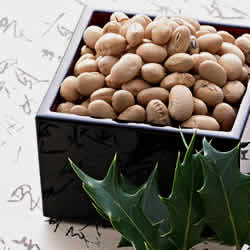 |
||||||||||||||||
DATE | FESTIVALS & EVENTS |
DISTRICT & NEARBY ACCOMMODATION |
||||||||||||||
| 3 |
Setsubun Bean Throwing Ceremony On the evening of Feb.3 people scatter roasted soybeans inside and outside their homes, loudly shouting,"Fuku-wa-uchi(in with good luck),Oni-wa-soto(out with devils)", to drive away evil spirits from the house. In shrine and temple compounds, well-known personalities such as sumo wrestlers and actors are invited to scatter roasted soybean, of the good luck for all participants. |
Nation-wide |
||||||||||||||
| Starts from two days before the first Sun. |
Sapporo Yuki matsuri ( Sapporo) Snow Festival This festival, a tourist-oriented spectacle, is famous for its snow sculpture contest. Large and elaborately sculptured snow images are constructed along the main thoroughfare of Sapporo. |
Sapporo-shi Hokkaido |
||||||||||||||
|
The first Sun. |
Onda matsuri Festival for Fertility Some festivals in Japan celebrate the male and female sex organs. These festivals are held to pray for both plentiful offsprings and bountiful harvests. And most of them are humorous and light-hearted. After rice-planting ceremony participants perform a play preteding a married couple having sex. |
Asuka-mura Nara |
||||||||||||||
|
The second Sun. |
Oni matsuri Devil Festival This festival is an annual event to drive away evil spirits and to forecast the coming year's farm crops. |
Shinmeisha Shrine Toyohashi-shi Aichi |
||||||||||||||
|
11 |
Kenkoku-kinenbi National Foundation Day According to old Japanese legends, this is the day when the Emperor Jinmu, the first Emperor of Japan, is said to have ascended the throne and established his capital in theYamato districts in the year 660B.C. It was thus designated as Japan's Foudation Day. |
National Holiday |
||||||||||||||
|
The middle Sat. and Sun. |
Kamakura Building Small Huts of Snow Children build small snow huts, a kind of Eskimo igloo(Kamakura)containing ceremonial altars dedicated to the Suijin-sama(god of water). They spend the night drinking Amazake(sweet drink), eating Mochi(rice cake),chatting and playing by candle light in Kamakura. |
Yokote-shi Akita |
||||||||||||||
| 16-17 |
Bonten matsuri Bonten Festival Bonten is a kind of sign post for god, consisting of a pole on top of which is a figure of the animal of the year. Teams of young men carrying Bonten do their best to be the first to reach the shrine and place it inside. Afterwards, they make an offering to the god to pray for a bountiful harvest,prosperous business and the safety of their families during the year. |
Miyoshi-jinja Shrine Akita-shi Akita |
||||||||||||||
| 17`20 |
Embri Rice-planting Festival Residents honor Inari(the deity associated with the rice harvest) with dances that mime the planting of rice. The Enburi is a type of agricultural tool. |
Hachinohe-shi Aomori |
||||||||||||||
| 18 |
Honen kigansai-Tanigumi-Odori (Tanigumi)Dancing Festival This festival is to pray for good harvest in Tanigumi-mura villages. And main feature is an unique dancing, carrying 4.3m long Shinai(bamboo swords) decorations and beating drums while dancing. |
Kegonji Temple Tanigumi-mura Gifu |
||||||||||||||
| 25 |
Baika sai Plum Blossom Festival It is held in comemmoration of the death of Sugawara Michizane, the great scholar of calligraphy and learning, well known by his posthumous title, Tenjin-sama. At this time an open-air tea ceremony is conducted under the plum trees which are in full bloom. |
Kitanotenmangu Shrine Kyoto |
||||||||||||||
|
The third Sat. |
Hadaka matsuri Semi-naked Festival A group of young men wearing only Fundoshi(loincloth)rush into the temple grounds to purify their bodies in the Yoshii River. At midnight, they scramble for a pair of "Shingi"(sacred wands)thrown down into the darkness by temple priest. The person who could catch the sacred wand is assured of happiness throughout the year. |
Saidaiji Temple Okayama-shi Okayama |
||||||||||||||
|
MARCH 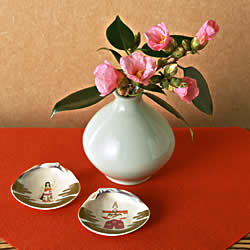 |
||||||||||||||||
DATE | FESTIVALS & EVENTS |
DISTRICT & NEARBY ACCOMMODATION |
||||||||||||||
|
3 |
Hina matsuri Doll's Festivalor or Girls' Festival Graceful dolls dressed in ancient costumes are displayed on a doll-stand, a tier of shelves covered with bright red carpets, to celebrate the girls' healthy growth. These dolls represent the Emperor and Empress, and noble court ladies. The girls are expected to be as graceful as these Heian nobles. |
Nation-wide |
||||||||||||||
| 1-14 |
Omizutori Sacred Water-Drawing A ceremony symboliziing the arrival of Spring in which torches scatter purifying sparks over participants who believe shower of sparks have a magic power agaist evil, and priests draw water from nearby holy well to offer to the bodhisattva Kannon. This festival is a part of the Todaiji Temple monk's training program known as Shunie. |
Tohdaiji Temple Nara-shi Nara |
||||||||||||||
|
3-4 |
Jindaiji Daruma Ichi (Jindaiji) Daruma Doll Fair Daruma fairs are popular especially in the Kanto district. Many open-air stalls selling Daruma (equivalent of Dharma, the Indian Buddhist saint) dolls are set up around shrine or temple compounds. It attracts many people, especially merchants, seeking good and strong luck of the year. They hope for their success in business as Daruma doll (round doll without arms and legs) always comes upright every time after it tumbles. People usually paint one of the doll's eyes when they make a wish and paint the other after the wish comes true. |
Jindaiji Temple Chofu-shi Tokyo |
||||||||||||||
| 3 |
Awashima-jinja Nagashi-bina (Awashima-jinja) Doll-floating Ceremony Thousands of Hina dolls made of clay and paper are sent out to sea by boat to protect calamity. In former times, there were custom to seek purification in the sea or in the river when people transferred defilement to paper figures, which were cast upon the waters with offerings to the gods. |
Awashima- jinja shrine Wakayama-shi Wakayama |
||||||||||||||
| 10 |
Shiogama-jinja Hote matsuri (Shiogama-jinja)Portable Shrine Festival The 250-year old "Ara Mikoshi"(portable shrine) displayed at this festival, ranks as one of the three biggest mikoshi in Japan. |
Shiogama-jinja Shrine Shiogama-sjhi Miyagi |
||||||||||||||
|
Sat. and Sun. in the middle of Mar. |
Omi-hachiman Sagicho sai (Omi-hachiman) Fire Festival A bonfire is made of old New Year decorations, twisted straw ropes and sheets of calligraphy. These are burnt on the last day of the festival, and people dance around it.Rice cakes are baked on this bonfire and eaten, as it is believed to keep one from catching cold during the year. This custom is known by a variety of names, such as Sai-no-Kami, DondoYaki, and Sagicho. Flaots decorated with the animal of the year are also famous. |
Himurehachiman-jinja Omi-hachiman-shi Shiga |
||||||||||||||
| 13 |
Kasuga matsuri Kasuga Shrine Spring Festival Famous for a series of rites such as Hiki-uma (sacred horse ceremony), Yamato-mai (graceful ritual dance) and other traditional ceremonies. They are said to be unchanged since the 9th century. |
Kasuga Shrine Nara |
||||||||||||||
| Around 21st |
Shunbun no Hi Vernal Equinox Day When the sun crosses the equator, day and night are of equal length everywhere. During the week containing this day Buddhist temple hold special services and people visit to family graves in the temple to clean the tombs and offer new flowers and incense to pay their respects to the spirits of their dead ancestors. |
Nation-wide |
||||||||||||||
| 15 |
Tagata-jinja Honen matsuri (Tagata-jinja)Festival for Fertility Some festivals in Japan celebrate the male and female sex organs. These festivals are held to pray for both plentiful offsprings and bountiful harvests. And most of them are humorous and light-hearted.This festival is famous for its parade of large wooden phalluses on portable shrine to pray for procreation and the sanctity of life. |
Tagata-jinja Shrine Komaki-shi Aichi |
||||||||||||||
| |
||||||||||||||||
|
APRIL 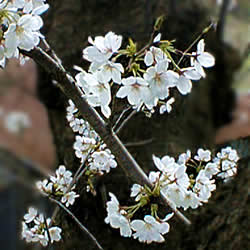 |
||||||||||||||||
DATE | FESTIVALS & EVENTS |
DISTRICT & NEARBY ACCOMMODATION |
||||||||||||||
|
1-30 |
Sadogashima matsuri A month-long Festival in Sado island Main feature of this festival is Ondeko,the famous traditional performing art in Sado island, in which people play taiko drums wearing devil masks. |
Sadogashima-island Niigata |
||||||||||||||
|
Sat. and Sun.nearest to 7-8 |
Inuyama matsuri Inuyama Festival Famous for its parade of 13 lavishly-decorated floats with over 300 "chochin"(paper lanterns). |
Harizuna-jinja Shrine Inuyama-shi Aichi |
||||||||||||||
|
The nearest Sat. and Sun. to Apr. 12 |
Shingenko-matsuri Shingenko Festival Shingen was the great warrior load in fuedal times. A well-known event at this festival, held on the anniversary of his death, is Shutsujinshiki, a ceremony held before battle. After this ceremony, more than 1000 men dressed as warriors stage a mock battle in the street. |
Kofu-shi Yamanashi |
||||||||||||||
|
The first Sat. and Sun. |
Katori-Jingu-Otauesai (Katori-Jingu)Rice-planting Festival Festivals held to pray for a bountiful harvest of rice can be seen everywhere in Japan. A group of womem clad in traditional farmer's costume(called Taue-onnna) plant rice seedlings in a rice paddy to the accompaniment of drums and flutes(calledOhayashi), and rice-planting songs. |
Katori-Jingu Shrine Sawara-shi Chiba |
||||||||||||||
| 14-15 |
Takayama-matsuri (Takayama)Spring Festival As a festival featuring festive floats, it is well known along with the Gion Festival of Kyoto and the Chichibu Night Festival in Saitama. The main feature of this festival is a parade of high-wheeled wagon floats, some of which are lavishly embellished with gold and decorated with elaborate carvings. There are 12 floats in spring, each of which is designated as a national Important Cultural Asset.Some floats have a clockwork marinettes made according to the highest level of Japanese techniques. |
Takayama-shi Gifu |
||||||||||||||
| 14-16 |
(Nagahama-hachiman) Hikiyama matsuri (Nagahama-hachiman)Floats Festival This festival features festival floats known as Hikiyama. Children aged from 5 to 12 perform Kabuki and Kyogen play on the stage of lavishly decorated festival floats. |
Nagahama-hachimangu Nagahama-shi Shiga |
||||||||||||||
| 27 |
Dojouji Temple Kane Kuyo (Dojouji)Requiem Service for Bell Praying service for bell in accordance with an old legend in which a princess turns into a snake and burns a priest to death using a Kane(big bell). |
Dojo-ji Temple Kawabe-cho Wakayama |
||||||||||||||
|
29 |
Hidaka Hibuse matsuri Festival for Fire Prevention This festival originated as a rite to ward off outbreak of fire. About 15 little girls, known as Saotome, ride the festival float and beat the small drums while others play stringed instrument or flutes. |
Hidakja-jinja Shrine Mizusawa-shi Iwate |
||||||||||||||
| 29 |
Midori no Hi Greenery Day It wa formaerly observed as the Emperor Showa's birthday until 1988. The name was chosen to commemorate the Emperor Showa who was an authority on biology and botanty and was interested in preserving the environment. |
Nationa Holiday |
||||||||||||||
|
Apr.29-May 3 |
Uesugi matsuri Uesugi Festival In commemoration of the great warrior load, Shingen, a procession of warriors in the costume of times (Musha Gyoretsu) and mock battles take place. |
Yonezawa-shi Yamagata |
||||||||||||||
|
Early Apr. - early May (once every 6 years) |
Onbashira matsuri Sacred Pillar Festival A ceremony held every sixth year in which large fir trees are cut down and used to replace four posts of shrine's building. The ceremony has 4 parts; Yamadashi(taking the tree from the forest), Satobiki(parading it through the street), Kawawatashi (carrying it across a river) and Hikitate(erecting it in the shrine precincts). |
Suwa taish Shrine Shimosuwa-machi Nagano |
||||||||||||||
| |
||||||||||||||||
|
MAY 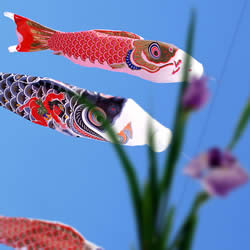 |
||||||||||||||||
DATE | FESTIVALS & EVENTS |
DISTRICT & NEARBY ACCOMMODATION |
||||||||||||||
| 1 |
Mikurumayama matsuri Mountain Floats Festival Special festival floats known as Mikurumayama are famous for its beautifully-embellished wheels and the traditional craftwork displayed in their decoration. |
Sekino-jinja Shrine Takaoka-shi Toyama |
||||||||||||||
| 2-4 |
Tarui Hikiyama matsuri (Tarui)Floats Festival This festival features festival floats known as Hikiyama. Children perform Kabuki play on the stage of lavishly decorated three-storied festival floats. |
Yaegaki-jinja Shrine Tarui-cho Gifu |
||||||||||||||
| 3 |
Kenpo Kinenbi Constitution Memorial Day On this day the establishment of the modern Japanese Constitution, which came into effect in 1947, is commemorated. This new Constitution prohibits armament and war. |
National Holiday |
||||||||||||||
| 3 |
Ofuna Asobi matsuri Boat Festival It recalls the graceful atmosphere of the Heian period when the Emperor and his courtiers often made pleasure boat excursions on the Oi River. People masquerading as the Emperor and courtiers ride on colorfully decorated boats reading Japanese poetry, playing the Japanese flute and harp, and dancing in the classical style as the ancient nobles did. |
Kyoto |
||||||||||||||
| 3-4 |
Hakata Dontaku (Hakata) Fancy-dress Procession Dontaku was derived from Dutch word Zontag meaning Sunday. Main attraction of this event is a parade of about 30,000citizens, which includes Matsubayashi (traditional-dress) parade, fancy costume parade and Shamoji band (clapping wooden rice scoops) parade. |
Hakata-shi Fukuoka |
||||||||||||||
|
May 3-Jul. 20 |
Yokohama Minato matsuri Yokohama Port Festival This port festival is noted for Internastional Fancy Dress Parade, in which over 3,000 people, including many non-Japanese residents take part. |
Yokohama-shi Kanagawa |
||||||||||||||
| 3-5 |
Hamamatsu matsuri Hamamatsu Festival Noted for a kite-flying competition in which boys and men do their best in making the largest kite, flying kites of various sizes and shapes, and trying to cross kite-strings in order to cut the rival's string |
Hamamatsu-shi Shizuoka |
||||||||||||||
|
3-5 |
Seihakusai Giant Floats Festival Famous for its Dekayama(giant mountain floats) and well-known Kabuki play by mechanical dolls on the floats. |
Otokonushi-jinja Shrine Nanao-shi Ishikawa |
||||||||||||||
| 5 |
Kodomo no Hi Children's Day The day was traditionally cerebrated as a Boys' Festival until immediately after World War2. Ceremonies and parties are observed throughout the country in the hope that children will grow up healthy and strong. Warrior Dolls are set up in the house and Koinobori(carp-shaped streamers made of paper or cloth) are hoisted to the top of a pole erected in the yard. |
National Holiday |
||||||||||||||
| 11-12 |
Takigi-Noh Open-air Torchlight Noh Drama Noh drama is performed in the evening on an open-air stage set up in the precincts of shrine. The performance is illuminated by blazing torches as the Noh plays, including a comic interlude(Kyogen) are presented after dark. The setting enhances the feeling of mystic profundity characteristic of Noh drama. |
Kofuku-ji Temple Nara-shi Nara |
||||||||||||||
| The nearest Sat and Sun.to May 15 (alternate years) |
Kanda matsuri Kanda Festival The highlight of this festival is a colorful parade of huge sacred palaquins drawn by an ox and about 70 Mikoshi(portable shrine) take part. This festival, one of Tokyo's three big festivals, is observed along with the Sanno Festival in alternate years. |
Kanda Myojin Shrine Chiyoda-ku Tokyo |
||||||||||||||
|
14-16 |
Izumo-taisha Daisairei (Izumo-taisha)Grand Festival Biggest festival in San-in district featured by very formal ceremonies. |
Taisha-machi Shimane |
||||||||||||||
|
16-18 |
Kurofune matsuri Black ship Festival This festival is held to commemorate the arrival of America's Commodore Perry who first asked for the opening of Japanese ports. Many events with international flaver including U.S.Navy parade take place. |
Shimoda-shi Shizuoka |
||||||||||||||
| 17-18 |
Toshogu Haru-no-Taisai (Toshogu) Spring Grand Festival Famous for its Yabusame (traditional art of shooting arrows from horseback) on 17th and Sen-nin Musha Gyoretsu( 1,000 fuedal warriors procession) on 18th. This festival is held in honor of the first Shogun of the Edo Era, Tokugawa Ieyasu and it recalls the large parade held when his coffin was reburied at the Toshogu Shrine in 1617. |
Toshogu Shrine Nikko-shi Tochigi |
||||||||||||||
| 15 |
Aoi matsuri Hollyhock Festival This festval has a history of 1400 years and is held to offer hollyhock (Aoi) leaves to the deities enshrined in both Shimo-gamo and Kami-gamo shrines in Kyoto. Its main attraction is an elegant pageant of Imperial ox-drawn carriages together with 600 people masquerading as officials in ancient times, Imperial messenger and court ladies dressed in Heian-period court custumes. (One of the three big festivals of Kyoto) |
Kamo Shrine Kyoto |
||||||||||||||
| 19-21 |
Mikuni matsuri (Mikuni) Floats Festival Known for its 5 meter-high festival floats with their huge carvings of feudal warriors. |
Mikuni-jinja Shrine Mikuni-shi Fukui |
||||||||||||||
| The third weekend |
Sanja matsuri Sanja(Three Shrines) festival One of Tokyo's three big festvals. This festival features a gala parade of about 100 portable shrines carried by men, women and children ,who are dressed in Happi-coats and Hachimaki-headband, a typical style of Edokko(Tokyoites) on festival days. |
Asakusa Shrine Taito-ku Tokyo |
||||||||||||||
| |
||||||||||||||||
|
JUNE 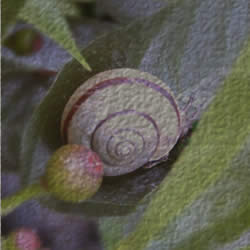 |
||||||||||||||||
DATE | FESTIVALS & EVENTS |
DISTRICT & NEARBY ACCOMMODATION |
||||||||||||||
| 1 |
Heian Jingu Takigi-Noh (Heian Jingu )Open-air Torchlight Noh Drama Noh drama is performed in the evening on an open-air stage set up in the precincts of shrine. The performance is illuminated by blazing torches as the Noh plays, including a comic interlude(Kyogen) are presented after dark. The setting enhances the feeling of mystic profundity characteristic of Noh drama. |
Heian Jingu Shrine Kyoto |
||||||||||||||
|
The first Sunday |
Mibu no Hana-taue (Mibu)Rice-transplanting festval Praying for a good harvest of rice, farmers transplant rice while singing traditional songs and beating drums to welcome the god of rice paddies to the field. Known for its special "taue-uta"(rice-planting songs). Taue means transplanting rice shoots from the seedbed to the rice paddy field. |
Chiyoda-cho Hiroshima |
||||||||||||||
|
10-16 (alternateYears) |
Sanno matsuri Sanno Festival A feature of this festival is a colorful parade of of parishioners wearing ancient costumes, kimono-clad children, ox-drawn carriages and festiaval banners. Tea ceremony as well as a classical fish cooking ceremnony called "Hocho-shiki" are held during festival.The festival is observed in alternate years along with the Kanda Festival.(One of Tokyo's three big festivals) |
Hie Shrine Chiyoda-ku Tokyo |
||||||||||||||
| 14 |
Sumiyoshi O-taue Shinji (Sumiyoshi) Rice-planting Ceremony Transplanting rice shoots from the seedbed to the rice paddy field is called "Taue". To pray for a bountiful harvest of rice, a group of women clad in a traditional farmer's costume plant rice seedlings in a rice paddy, singing rice-planting songs to the accompaniment of drums and flutes, usually played by men clad inYukata. |
Sumiyoshi Taisha Shrine Osaka |
||||||||||||||
| 15 |
Chagu-chagu umakko Horse Feastival This festival, held in celebration of the god of horses, is unique to horse-breeding districts as a prayer for the safety of horses and prosperity of their owners. Owners lead colorfully decorated horses carrying children on their backs through the city. Chagu-chagu refers to the tinkling sound of the bells on the horse harness. |
Takizawa-mura Morioka-shi Iwate |
||||||||||||||
| 17 |
Saigusa matsuri Lily Festival Shrine maidens dressed in white kimono with red skirts perform a sacred Shinto dance on the shrine stage holding two bunches of lilies. The highlight of this festival is a parade of Shinto priests and people dressed in white costume holding lilies, headed by a big wagon loaded with lilies. |
Omiwa Shrine Nara |
||||||||||||||
| 20 |
Takekiri-E Bamboo Cutting Ceremony This festival originated in the 8th century when a pair of large male and female snakes harassed the villagers of Kamakura. The famous priest killed the male snake and pacified the female snake by preaching . 2 groups of 4 men rush out to cut bamboo poles, representing the snakes which are incarnations of evil, into 8 pieces. |
Kamakura Temple Kyoto |
||||||||||||||
| |
||||||||||||||||
|
JULY 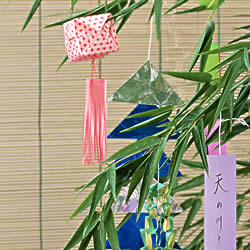 |
||||||||||||||||
DATE | FESTIVALS & EVENTS |
DISTRICT & NEARBY ACCOMMODATION |
||||||||||||||
| 1 |
Fujisan-Yamabiraki Opening Festival of the climing season of Mt.Fuji. |
Shizuoka and Yamanashi |
||||||||||||||
|
1-15 |
Hakata Gion Yamagasa (Hakata)Gion Floats-race Festival This festival is one of local Gion Matsuri , which originally started in Kyoto, and is famous for its Oiyama race on 15th, in which teams dash with their Kakiyama( one of the two types of festival floats) along a 5km. course. |
Kushida-jinja Shrine Fukuoka-shi Fukuoka |
||||||||||||||
| 1-29 |
Gion matsuri Gion Festival Monthlong festival reaches its height on 17th with a parade of floats bearing musicians or figures of historical and mythical personages. There are 29 sacred festive floats mounted with decorative halberds;seven large ones called"Hoko"and 22 smaller ones called"Yama". Each float is decorated with many time-honored ornaments, brightly illuminated by paper lanters and drawn by many men to the famous musical accompaniment called Gion-bayashi. (One of three big festvals of Kyoto) |
Yasaka-jinja Shrine Kyoto |
||||||||||||||
|
6-8 |
Iriya no Asagao Ichi Morning Glory Fair This fair is said to have started as a competition among professional gardeners to see who could grow the best morning glory. A variety of morning glories is sold at open-air street stalls. |
Kishibojin Taito-ku Tokyo |
||||||||||||||
|
7 |
Tanabata Star Festival This festival celebrates the legendary meeting of two lovers, Kengyu(the star Altair, personified as a cowherd ) and Shokujo(Vega, as weaving girl). In the legend, they are separated by the Milky Way and allowed to meet only once a year. Praying for their happy reunion on this evening, people hang long narrow strips of colored paper on which poems and wishes have been written or other colorful decorations, on the branches of a bamboo set up in the garden or in front of the house. (In some districts this festival is celebrated on Aug. 7 ) |
Nation-wide |
||||||||||||||
|
7-9 |
Naritasan Shinshoji Gion Matsuri (Naritasan) Gion Festival One of local Gion Matsuri , which originally started in Kyoto and is famous for its gorgeously-decorated festival floats and gion-bayashi music. |
Naritasan Shinshoji Temple Narita-shi Chiba |
||||||||||||||
| 9-10 |
Asakusa Kannon Yonman-rokusen nichi (Hozuki Ichi) 46000 Days(Ground Cherry Fair) It is believed that the prayers on this day will afford the same number of blessings as having visited the shrine on Yonman-rokusen (46000) other days. Also, this day is famous for Hozuki(ground cherry) Ichi(fair). Hundreds of open-air stalls are set up to sell ground cherries and wind bells until midnight. |
Sensoji-Temple Taito-ku Tokyo |
||||||||||||||
| 14 |
Nachi no Himatsuri (Nachi) Fire Festival The highlight of this festival is the dramatic meeting and a big tussle of two groups on the stones of the approach to the shrine. One consists of white-robed priests carrying 12 huge burning torches and the other is a procession of 12 Ogi-Mikoshi(portable shrine). |
Kumanonachi-taisha Nachikatsuura-cho Wakayama |
||||||||||||||
|
Middle of Jul. |
Tai matsuri Sea Bream Festival Decoration of huge(20m.long) Tai( sea bream)are carried out into the sea praying for good hauls of fish. |
Toyohama Minamichita-cho Aichi |
||||||||||||||
|
19-21 |
Tajima Gion matsuri (Tajima) Gion Festival The festval is one of local Gion Matsuri, which originally started in Kyoto, and this festval is famous for its Kabuki play on theYatai(floats) |
Kumano-jinja Shrine Tajima-machi Fukushima |
||||||||||||||
| 20-24 |
Osorezan Taisai Osorezan Grand Festival Mt. Osorezan is believed as a mountain of gathering-place for dead souls. Women mediator called Itako help visitors hear the voice of the dead relatives. |
Bodaiji-Temple Mutsu-shi Aomori |
||||||||||||||
| 20-27 |
Yamaguchi Gion matsuri (Yamaguchi) Gion Festival The festval is one of local Gion Matsuri which originally started in Kyoto and this festval is famous for its elegant dance called Sagimai costumed as snowy herons. |
Yasaka jinja Shrine Yamaguchi-shi Yamaguchi |
||||||||||||||
|
23-24 |
(Warei Taisai) Uwajima matsuri (Uwajima) Grand 69Festival Famous for its hundreds of ships with the colorful Tairyoubata(big catch) flags in the sea, Hashirikomi ceremony of Mikoshi and strange creature called Ushioni |
Warei-jinja Shrine Uwajima-shi Ehime |
||||||||||||||
| 23-25 |
Soma Nomaoi (Soma)Wild Horse Chasing Festival On the first day, a parade of horsemen wearing feudal costumes arrives at the field, accompanied by sacred portable shrines. They race to the sound of conch shells(Horagai). This race is called Katchu-keiba. The next day, they scramble for shrine flags shot up high into the air(Shinki-sodatsusen). On the last day, armed horsemen chase wild horses into an enclosure of Shrine and white-costumed men try to catch 4 or 5 horses with bare hands to offer to the gods(Nomaoi). |
Soma-shi Fukushima |
||||||||||||||
| 24-25 |
Tenjin matsuri Tenjin Festival This festival is observed to avert pestilence as is the Gion Festival in Kyoto. The climax of this festival is a flotilla of elaborately decorated boats, some of which are carrying portable shrines. Classical dances are performed on the boats, which are lit with bright lanterns and fireworks. |
Tenmangu Shrine Osaka |
||||||||||||||
| The third Fri.,Sat. and Sun. |
Kokura Gion Daiko (Kokura) Drum-beating Festival This festival is noted for the unique way of the Taiko(drums) are beaten.The festval is one of local Gion Matsuri which originally started in Kyoto and main attraction of this festival is drum-beating contest. |
Kita kyushu-shi Fukuoka |
||||||||||||||
| 28 |
Onda O-taue Matsuri Rice-planting Festival This festival is held after rice planting is over. Women called"Unari", dressed in white robes take part in the procession to make food offerings to the god called Tano Kami. |
Aso-jinja Shrine Ichinomiya-cho Kumamoto |
||||||||||||||
|
Last Sat. |
Sumidagawa Hanabi Taikai (Sumida-river)Grand Firework Display The most famous fire display in Japan which has 250 years' history. |
Sumidagawa-river Tokyo |
||||||||||||||
| Last Sun. |
Nagasaki Peiron Peiron Boat-race Festival Teams of 36 men(including coxwain, drummer and gong beater) race on long and narrow boats which is called Peiron |
Nagasaki-shi Nagasaki |
||||||||||||||
|
|
||||||||||||||||
|
AUGUST 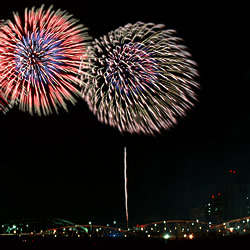 |
||||||||||||||||
DATE | FESTIVALS & EVENTS |
DISTRICT & NEARBY ACCOMMODATION |
||||||||||||||
|
The first Sat. and Sun. |
Daiyokkaichi matsuri (Yokkaichi) Floats Festival Main feature of this festival is the huge Onyudo(priest)doll which was made originally to drive away evil spirits of Tanuki(raccoon dogs). |
Yokkaichi-shi Mie |
||||||||||||||
|
1-7 |
(Hirosaki) Neputa matueri (Hirosaki)Neputa Float Festival Famous for its parade of large fan-shaped Neputa with their gorgeous designs derived from Chinese narrative scrolls depicting brave warriors fighting. Also called Kenka(fighting)Neputa. |
Hirosaki-shi Aomori |
||||||||||||||
|
2-7 |
(Aomori)Nebuta matsuri (Aomori) Nebuta Floats Festival Nebuta is a various kinds of dummies representing all manner of fabulous warriors, animals and birds, made of bamboo and paper, painted in various colors and illuminated from inside by large candles. Main feature of this festival is the gala parade of these huge and wide Nebuta, mounted on large floats and pulled by townspeople who are dancing to the accompaniment of light-hearted Hayashi-music and big drum performance.(One of the four big festivals in Tohoku region.) |
Aomori-shi Aomori |
||||||||||||||
|
4-5 |
Shiogama Minato matsuri Shiogama Harbor Festival Praying for safety at sea is the main purpose of this festival as Typhoon(stormy weather) season is near at hand. |
Shiogama-shi Miyagi |
||||||||||||||
| 4-7 |
Kanto matsuri Lantern Festival This festival is associated with prayers for a bountiful harvest of crops. Kanto is a 10m. long bamboo pole with 9 horizontal bars from which swing, on both sides, 46-48 lighted Chochin(paper lanterns) in the form of an abundant crop of rice. Highlight of this festival is the nighttime parade-competitions of stout young men skillfully balancing this Kanto on their shoulders, foreheads, hips and chins without using their hands. (One of the four big festivals in Tohoku region.) |
Akita-shi Akita |
||||||||||||||
| 5-7 |
Hanagasa matsuri Flower Sedge-hat Festival Famous for its gala parade of people wearing round sedge-hats decorated with colorful artificial flowers, accompanied by drums, shamisen and other musical instruments. Men wear happi-coats and Yukata, and women wear brightly-colored long undergarments with a red sash to hold up the tucked sleeves. In each group,children dressed in red happi-coats dance their way along the street of the city, ringing a bell. (One of the four big festivals Tohoku region.) |
Yamagats-shi Yamagata |
||||||||||||||
| 6-7 |
Tanabata Etoro matsuri Paper Lantern Festival A kind of Tanabata festivals which are to be seen in various parts in Japan. (Refer to Jul. 7th description) Main feature of this festival is huge paper lanterns of Ukiyoe-style beauties or popular show-business personalities displayed along the main streets. |
Yuzawa-shi Akita |
||||||||||||||
| 6-8 |
Sendai Tanabata matsuri Sendai Star Festival A kind of Tanabata festivals which are to be seen in various parts in Japan.(Refer to Jul. 7th description) This festval in Sendai is one of the four big festivals in Tohoku region, and millions of visitors flock to this city during theTanabata season. |
Sendai-shi Miyagi |
||||||||||||||
|
12-15 |
Awa odori (Awa) Bon-dance Festival A variation of Bon dance in which about 950 groups of men and women in decorative costumes dance around noisily in the streets to the light-heated miusic played on Shamisen(a three-stringed guitar-like instrument), drums and flutes. |
Tokushima-shi Tokushima |
||||||||||||||
| 13-15 |
Obon Festival of Souls In Buddhism, Obon is the time when the spirits of the dead are believed to visit their families. People make bonfires to lead the spirits to their homes. They also perform Bon dances and visit their ancestors' graves to comfort the spirits. Many city-dwellers go back to their hometowns in the countryside over the summer holidays. |
Nation-wide |
||||||||||||||
| 15 |
Shoro(orToro) nagashi Floating of Lighted Lanterns Away This custom of floating of lighted lanterns away to the sea or river, is observed at the end of the Bon Festival. According to Buddhist belief,the lanterns guide the ancestral spirits safely back to the land of the dead. Therefore, small paper lanterns lighted with candles are set on small boats on rivers or the sea. |
Nagasaki-shi Nagasaki |
||||||||||||||
| 15-16 |
Yamaga Toro matsuri (Yamaga)Bon-dance Festival In this festival women dance with beautiful Toro(paper lantern) on their heads. |
Yamaga-shi Kumamoto |
||||||||||||||
| 16 |
Daimonji (Okuribi)Yaki Great Bonfire Event Okuribi is a fire lit to send the souls of the deceased ancestors back to heaven after their brief return to earth for the Bon Festinval. In this festival, 5 mountains are used as the stage for Okuribi. Immediately after fires are lit on Mt. Nyoigatake at 8:00 p.m. to form the Chinese character"dai"meaning"large" more fires are lit separately on each mounntain to form different patterns. The fire before Bon Festival is called Mukaebi(welcoming fire). |
Kyoto-shi Kyoto |
||||||||||||||
|
16 |
Miyazu Toro Nagashi Floating of Lighted Lanterns Away This custom of floating of lighted anterns away to the sea or river, is observed at the end of the Bon Festival. According to Buddhist belief, the lanterns guide the ancestral spirits safely back to the land of the dead. Therefore, small paper lanterns lighted with candles are set on small boats on rivers or the sea. This fetival is famous for its fireworks and about 10,000 Toro sent down the river. |
Miyazu-shi Kyoto |
||||||||||||||
|
24-26 |
Shinjo matsuri Shinjo Festival Colorful floats decorated Kabuki scenes are followed by musical bands of flutes drums and other instruments. |
Shinjo-shi Yamagata |
||||||||||||||
| 26-27 |
Yoshida no Himatsuri (Yoshida) Fire Festival Festival the climing season n Mt.Fuji and many big Taimatsu (pine torches)are lit at once. One of the big "strange festivals"in Japan. |
Fujiyoshida-shi Yamanashi |
||||||||||||||
|
SEPTEMBER 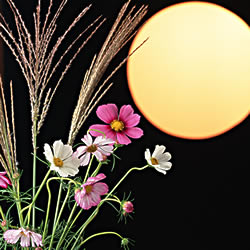 |
||||||||||||||||
| DATE | FESTIVALS & EVENTS |
DISTRICT & NEARBY ACCOMMODATION |
||||||||||||||
| 14-16 |
(Tsurugaoka Hachimangu) Yabusame Shooting Arrows from Horseback Horsemen dressed in the Kamakura Era(12th century)hunting costume known as Kari-shozoku compete in a contest of traditional horse-back archery in the precincts of the Shrine. |
Tsurugaoka Hachimangu Kamakura Kanagawa |
||||||||||||||
| 15 |
Keiro no Hi Respect-for-the-Aged-Day Day for showing respect and thankfullness to the elderly who have devoted themselves to the society so many years, and for cerebrating their long life. |
National Holiday |
||||||||||||||
| 22-24 |
Aizu Byakko matsuri (Aizu) Byakko Festival 700 warriors parade reconstructs the scene of famous battle in which young boy soldiers of this districts known as Byakkotai army corps fought and died in 1868. |
Aizuwakamatsu-shi Fukushima |
||||||||||||||
| Around 23 |
Shubun no Hi Autumnal Equinox Day When the sun crosses the equator, day and night are of equal length everywhere. During the week containing this day Buddhist temple hold special services and people visit to their family graves to clean the tombs and offer new flowers and incense to pay their respects to the spirits of their dead ancestors. |
National Holiday |
||||||||||||||
|
OCTOBER 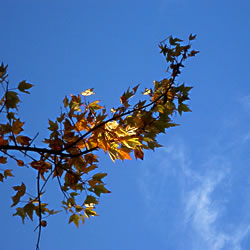 |
||||||||||||||||
DATE | FESTIVALS & EVENTS |
DISTRICT & NEARBY ACCOMMODATION |
||||||||||||||
| 2-4 |
Horai matsuri Floats Festival Praying for good harvest, 4m. high dolls decorated with many vegetables are carried through street. |
Tsurugi-machi Ishikawa |
||||||||||||||
| 4-6 |
Nihonmatsu no Chochin matsuri (Nihonmatsu)Lantern Festival Festival floats decorated with many Chochin (paper lantern) parade around the town playing Matsuribayashi festival music. |
Nihonmatsu-jinja Shrine Nihonmatsu-shi Fukushima |
||||||||||||||
| 9-7 |
Nagasaki Kunchi Okunch Festival The main feature of this festival is a parade of traditional Kasaboko floats lavishly decorated with umbrella-shaped decorations which are the symbol of this festival. An exotic Chinese-style dragon dance to the sound of firecrackers is also famous. Kunchi is a local dialect word meaning"autumn festival." |
Suwa-jinja Shrine Nagasaki-shi Nagasaki |
||||||||||||||
| 9-10 |
Takayama Maturi (Takayama)Autumn Festival As a festival featuring festive floats, it is well known along with the Gion Festival of Kyoto and the Chichibu Night Festival in Saitama. The main feature of this festival is a parade of high-wheeled wagon floats, some of which are lavishly embellished with gold and decorated with elaborate carvings. There are 11 floats in autumn, each of which is designated as a national Important Cultural Asset.Some floats have a clockwork marinettes made according to the highest level of Japanese techniques. |
Takayama-shi Gifu |
||||||||||||||
| 10 |
Taiiku no Hi Sports Day Day on which good physical and mental health are fostered through the enjoyment of sports. This day was established in commemoration of Tokyo Olympic Games which were held in 1964, and now many sporting events are held throughout the country. |
National Holiday |
||||||||||||||
| 14-15 |
Takengei Acrobatic Performance Young men wearing fox masks perform acrobatic tricks on top of two 15m- high bamboo poles. |
Wakamiya Inari-jinja Nagasaki-shi Nagasaki |
||||||||||||||
| 14-19 |
Doburoku matsuri (Doburoku)Sake Festival Eight-legged Shishi (Chinese lion)leads a parade of Ohayashi (festival music)bands and people carryoing Nobori(banners). And everyone including spectators can enjoy drinking Doburoku (unrefined local rice wine). |
Hachiman-jinja Shrine Shirakawa-mura Gifu |
||||||||||||||
|
The third weekend |
Kawagoe matsur Kawagoe Festival Huge richly-decorated 22floats of Edo Era crash into each other and Ohayashi (festival music) also has a competition of noisness. |
Kawagoe-shi Saitama |
||||||||||||||
| 22 |
Jidai matsuri Festival of the Ages Famous for its big procession of people wearing picturesque costumes and ancient armor and weapons, each representing the culture and institutions of bygone days from the Heian period(8th cetury) to the Meiji era (19th century). There are some 2,000 participants and 70 horses and oxen.(One of three big festvals in Kyoto) |
Heian-jingu Shrine Kyoto |
||||||||||||||
| 22 |
Kurama no Hi-matsuri Great Fire Festival at Mt.Kurama The main feature of this festival is a mysterious parade of two sacred portable shrines among large crowds of people carrying burbning pine-torches in their hands. This fire festivals originated in the custom of lighting fires called Mukaebi(welcoming fire) to guide gods or spirits from the other world on their visits to this world. |
Yuki-jinja Shrine Kyoto |
||||||||||||||
| 23-25 |
Ueno Tenjin matsuri Demons Parade Festival Famous for itsOni-gyoretsu (parade of demons)which is said to have been started to halt a plague. Over 100 demons leads the parade, followed by Shichifukujin (7gods of good fortune) dancers, 9festival floats, mikoshi and other attractions. |
Sugawara-jinja Shrine Ueno-shi Mie |
||||||||||||||
|
NOVEMBER 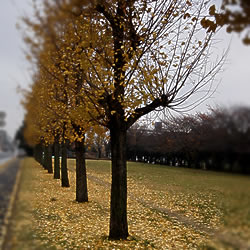 |
||||||||||||||||
DATE | FESTIVALS & EVENTS |
DISTRICT & NEARBY ACCOMMODATION |
||||||||||||||
| 2-4 |
Karatsu Kunchi Karatsu Kunchi Festival Beautifully lacquered 14 floats representing samurai-helmets and such animals as lions and dragons are carried through the town in this 400-year-old festival.Kunchi is a local dialect word meaning"autumn festival". |
Karatsu-jinja shrine Karatsu-shi Saga |
||||||||||||||
| 3 |
Bunka no Hi Culture Day The day was established to stress the importace of science and culture, and also to thank those who have contributed to the advancement of culture. On this day government grants medals to people of merit who have made significant contributions to cultural progress in Japan. |
National Holiday |
||||||||||||||
| 3 |
Hakone Daimyo Gyoretsu( (Hakone) Procession(Gyoretsu)of Daimyo(feudal load)Feudal Load Procession It recalles the ceremonial jouneys made by feudal loads and their vassals to and from Edo(Tokyo)crossing Mt.Hakone in the EdoEra.150participants are all dressed in the coustume of the times and some of them perform the traditional walking dance carrying long sprar. |
Hakone-machi Kanagawa |
||||||||||||||
| 15 |
Shichi-go-san Festival for Children of three, five and seven years of age It is a festival to celebrate the growth of children. Girls of seven, boys of five and three year old children of either sex are dressed in gay clothes and taken to tutelary shrines in the neighborhood by their parents to give thanks to tutelary deities for having permitting the children to reach these ages safely and also to pray for the continued growth and good health. |
Nation-wide |
||||||||||||||
| 23 |
Kinro Kansha no Hi Labor Thanksgiving Day The day was established to recognize the importance of labor and rejoices over bountiful production. |
National Holiday |
||||||||||||||
|
Tori-no-hi in Nov. |
Tori no Ichi Cock Fairs Vendors lining the streets in front of Otori shrines sell such charms as Kumade(ornamental bamboo garden rakes decorated with trinkets of various sizes, shapes and coins and masks of lucky gods). It is believed the bamboo rakes will gather in ("rake in")good fortune. Many people come from far away to buy them. These fairs are held throughout Japan. |
Otori Shrine Taito-ku Tokyo |
||||||||||||||
|
DECEMBER 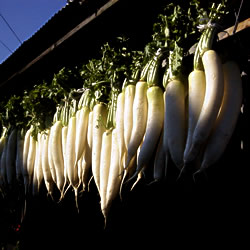 |
||||||||||||||||
DATE | FESTIVALS & EVENTS |
DISTRICT & NEARBY ACCOMMODATION |
||||||||||||||
| 2 |
Oshiroi matsuri Powder Festival Praying for the good harvest of rice in next year, participants powder the flour made from current year's rice. |
Hahi-machi Fukuoka |
||||||||||||||
|
2-4 |
Chichibu Yo matsuri Chichibu Night Festival Night festival known for its spectacular parade of two gorgeously decorated carts and four floats with the musical accompaniment of flutes, drums,gongs and other instruments. A Kabuki drama is performed on these festival floats, which include a revolving stage, a drop curtain, an apron stage and other equipment. Colorful fireworks display is also famous. |
Chichibu-jinja Shrine Chichibu-shi Saitama |
||||||||||||||
| 3 |
Morotabune shinji Fishing Fleet Ceremony The boatman are selected by a lottery held by the head of the the shrine. 9 oarsmen enter the boat together and the race is rowed three times. The coswain of the boat reaching the shore first shouts to the priest, who replies"Congratulation. Thanks to your baooat, heaven, earth,and man will prosper". |
Miho-jinja Shrine Mihonoseki-machi Shimane |
||||||||||||||
| 16-18 |
Kasuga Wakamiya on-matsuri (Kasuga Wakamiya) Grand Festival Highlight of this festival is a gay pageants of people masquerading as courtiers, vassals attired in ancient costumes and a long procession of samurai warriors dressed in armor and carrying weapons. Sacred Shinto music and dances as well as Noh play are performed in the traditional manner. |
Kasuga Wakamiya Shrine Nara |
||||||||||||||
| 17-19 |
Asakusa kannon Hagoita-Ichi (Asakusa)Battledore Fair Selling fair of Hagoita(battledore-artistically ornamented wooden paddle with pictures of famous Kabuki actors or something similar, in raised pictures, which is used in Japanese traditional badminton-like game called Hanetsuki (shuttlecock and battledore) |
Taito-ku Tokyo |
||||||||||||||
| 23 |
Tennou Tanjobi Emperor's Birthday The Emperor of Japan does not rule,but is a symbol of the nation. It is customary for the Imperial Family to appear on the balcony of the Imperial Palace and exchange greetings with the public,who are allowed to enter the compound. |
National Holiday |
||||||||||||||
| 31 |
Okera Matsuri Sacred Fire Rite A sacred fire of the medicinal herb(Okera) is lit on NewYear's Eve, and in the early hours of January 1st visitors can take home some of the fire kindled on lengths of special rope. To cook the first meal of the year with the sacred fire from these embers is believed to prevent illness. |
YasakaShrine Kyoto |
||||||||||||||
| 31 |
Namahage Devil Festival Men representing demons visit the houses to warn the children agaist bad behavior and laziness. Also, they pray with the family at the altar of the family gods for luck in the new year. Namahage wears Mino(straw raincoat) and carries Teoke(wooden pail)and Debabocho(kitchen nife). This festival is celebrated mainly in the north of Japan. |
Oga-shi Akita |
||||||||||||||
|
31 |
Toshidon Devil Festival Men with devil masks known as Toshidon warn children against bad behavior and laziness. Although this custom is observed in the south of Japan, it resembles the Namahage festivals of the north. |
Shimokoshiki-mura Kagoshima |
||||||||||||||
| 31 |
O misoka NewYear's Eve This is a very important annual event on which most people stay at home and have a peaceful and pleasant time, eating noodles specially prepared for the occasion People sit up late until midnight to listen to the 108peals of the nearby temple belliJyoya no Kane), which ring out the old year and herald the coming of the new year. |
Nation-wide |
||||||||||||||